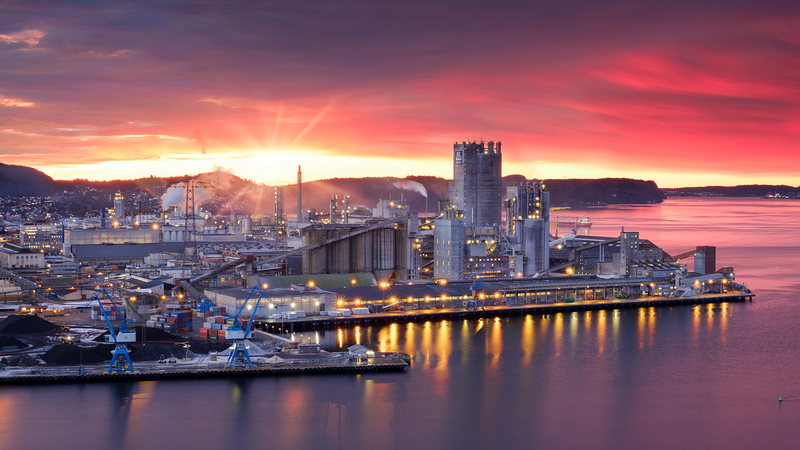
Yara’s Porsgrunn facility
Yara plans to invest up to $2 billion in a second state-of-the-art blue ammonia plant as the Scandinavian group continues its push into low-carbon production capacity in the US and mulls permanent shutdowns of some European ammonia plants.
Having recently set aside up to $1.45 billion for the full offtake of a 1.2-1.4m.t per year joint venture project in Texas with Enbridge, Yara is now eyeing up a site for another plant with an undisclosed partner that would give them 800,000t/year to 1m. tonnes/year of fresh capacity.
While no Final Investment Decision (FID) on that project has yet been reached, Yara believes it can “profitably decarbonise its premium product operations in Europe while also diversifying its energy position”.
“The Inflation Reduction Act (IRA) makes the US a highly attractive location to produce decarbonised ammonia,” said President and CEO, Svein Tore Holsether, ahead of Yara’s Capital Markets Day today.
“Exporting this decarbonised ammonia from US to the European market, matched with the flexibility of Yara’s European production assets, enables cost effective decarbonisation of fertilizer production.”
The senior executive revealed that the Oslo-headquartered giant calculates that the IRA tax credits, including $85pt of CO2 stored, represent a total fiscal incentive of around $150pt of ammonia produced.
“Yara has a future optionality to consider closing some EU ammonia production capacity, with our terminal structure in Europe representing a strong competitive advantage,” he added.
Yara is exploring the viability of a potential minority divestment of its Yara Clean Ammonia (YCA) division, but a decision has been delayed “as the YCA project portfolio attractiveness surpasses its current market valuation, and major capital outlays are planned from 2025 onwards”.
With a global network of 18 ammonia terminals and a 14-strong fleet of specialised tankers, the Scandinavian major believes it is well placed to cash in on the predicted 290m. tonne/year jump in global ammonia demand by 2050.
Annual demand is seen at 522m. tonnes by that date – versus 181m. tonnes in 2021 – with the bulk of those new orders coming from the shipping and power generation sectors, Yara noted, adding blue ammonia production costs in the US are “significantly below European cash cost”.
While its long-term goal is to become carbon-neutral via investment in green ammonia plants and associated infrastructure, more than two thirds of Yara’s European assets are flexible on ammonia source, meaning there are opportunities to decarbonise nitrate and NPK production.
“Yara has looked at the US for a long time when it comes to developing upstream assets in the US,” added Magnus Krogh Ankarstrand, President of YCA, noting the producer’s last upstream ammonia investment in the country was the Freeport plant joint venture with BASF back in 2018.
“The combination of low-cost gas, the opportunity for significant scale and – in relative terms – affordable carbon capture and sequestration, makes this a significant opportunity for us,” he confirmed.
“Yara will prioritise strategic and value-creating investment in the US in clean ammonia as a part of our total portfolio.” While the company did not name any of its European plants that might face the axe or lengthy capacity curtailments, they are unlikely to include its huge site at Sluiskil (1.9m. tonnes/year of ammonia capacity) in the Netherlands or Porsgrunn in Norway (500,000t/year).
Both those production facilities are currently earmarked for blue and green ammonia technologies, leaving its UK plant at Hull (300,000t/year capacity) and Tertre plant in Belgium (400,000t/year) as potential candidates for closure.
Yara also has a 600,000t/year plant at Ferrara in Italy which sends material down the coast to Ravenna – where the group also imports cargoes on a regular basis.
Meanwhile, Yara’s Industrial Solutions arm runs an 800,000t/year ammonia plant at Brunsbuttel in Germany and a 400,000t/year ammonia unit at Le Havre in France, with exports from both ports occurring frequently.
By Richard Ewing, Head of Ammonia/Deputy Editor at Profercy






